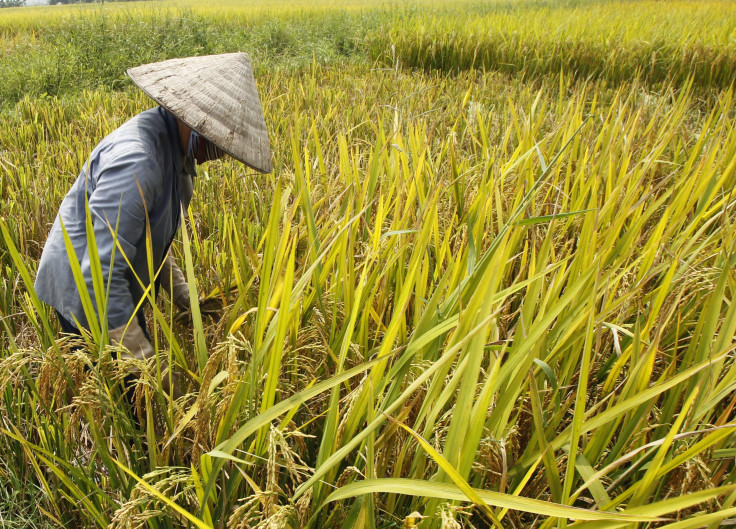Global Rice Stockpiles Expanding To 12-Year-High, Expected To Diminish $1.1 Trillion Global Food Import Bill

Global rice stockpiles are expanding to the highest level in 12 years, owing to record production increases, which add to a worldwide surge in agricultural outputs that is poised to diminish the $1.1 trillion amount importing nations pay for food.
For the seventh year, rice reserves will increase – rising 2.7 percent to 108.6 million metric tons in 2013 – 2014, according to the estimates of the U.S. Department of Agriculture. Output will rise 1.9 percent to 479.2 million tons, exceeding demand by 2.8 million tons. By December, prices for 5 percent broken Thai white rice, an Asian benchmark, will drop 13 percent to $455 per ton, according to the median estimates from eight traders and analysts, compiled by Bloomberg.
Global output of rice, corn, soybeans and wheat will advance to a record high as fields in the U.S. and Europe recover from last year’s droughts, according to the USDA. Prices for wheat, corn and soybeans are already declining, contributing to overall decreases in world food costs, as tracked by the United Nations. In particular, rice stockpiles are now equal to almost three years of annual trade.
“The stocks are so big, I don’t think anyone can talk about a bottom in prices,” said Geneva-based Mamadou Ciss, the president of Alliance Commodities SA, who has traded rice for almost three decades, according to Bloomberg. “There is oversupply for sure in the world. The crops are pretty good everywhere.”
Increasing rice inventories, which have expanded 44 percent since 2006-2007, mean less will be imported globally – dropping to 37.6 million tons, according to the estimates of the U.N.’s Food & Agriculture Organization in Rome, the first contraction in four years.
Government subsidies play a role in encouraging production, even as prices decline and stockpiles expand. Thailand, once the largest exporter, spent 588.7 billion baht ($189 billion) since October 2011, stockpiling 27 million tons of rice under a policy that paid farmers as much as 50 percent more than local prices.
Last year alone, the Thai government lost about 137 billion baht through the subsidy program, according to a government estimate. Moody’s Investors Service said last month the policy is undermining efforts to balance the budget by 2017, according to Bloomberg. The government intends to keep selling from its stockpiles, but kept the purchase price at 15,000 baht a ton this month, reversing the proposal to lower it to 12,000 baht.
Thai domestic output will expand 4.5 percent to 21.1 million tons in 2013-2014, according to USDA estimate.
The U.S., currently the fourth-biggest shipper of rice, will drop its output by 4.7 percent to a two-year low of 6.04 million tons, reducing the reserves to the smallest since 2009, the USDA predicts, offsetting increasing Asian production. Rough rice futures on the Chicago Board of Trade climbed 2.2 percent to $14.865 per 100 pounds since the eight-month closing low of $14.54 in March.
In addition to increased production, global demand for rice is decreasing, according to the Food and Agriculture Organization of the United Nations. Purchases by Nigeria, the largest importer last year, will decrease by 10 percent to 2.7 million tons. Imports by Indonesia, the third largest, will slide 28 percent.
“It’s a buyers’ market with ample supplies of rice and other grains around the globe,” said Kiattisak Kanlayasirivat, a Bangkok-based director with Novel Commodities SA, which trades about $600 million of rice a year.
China, on the other hand, will have a boosted external demand, according to Beijing Orient Agribusiness Consultant Ltd., a grain research company, due to the fear caused by the discovery of the toxic substance, cadmium, in some rice from southern China. The country will buy a record 3 million tons, according to the USDA. China is also buying more because it is cheaper than domestic supply, according to a report from the USDA’s Economic Research Service unit on June 14.
© Copyright IBTimes 2024. All rights reserved.



















